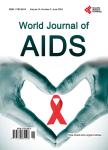Towards Developing Communication Strategies for HIV/AIDS Control among the Scheduled Tribes and Scheduled Castes Women in Three Northeastern States of India
Towards Developing Communication Strategies for HIV/AIDS Control among the Scheduled Tribes and Scheduled Castes Women in Three Northeastern States of India作者机构:Department of Anthropology Vidyasagar University Midnapore India Department of Biomedical Laboratory Science & Management Vidyasagar University Midnapore India Department of Community Medicine M. M. Institute of Medical Sciences and Research Ambala India National Institute of Medical Statistics (ICMR) New Delhi India Regional Medical Research Centre for Tribals (ICMR) Jabalpur India Xavier Institute of Development Action & Studies (XIDAS) Jabalpur India
出 版 物:《World Journal of AIDS》 (艾滋病(英文))
年 卷 期:2013年第3卷第4期
页 面:367-377页
学科分类:1002[医学-临床医学] 100214[医学-肿瘤学] 10[医学]
主 题:AIDS Awareness Transmission Prevention & Misconception Communication Strategy
摘 要:HIV/AIDS spread has opened a Pandora of medical and health problems apart from creating serious socio-psychological trauma for the victims and their families. Despite the governmental effort to curve the growing infection, very little success has been achieved. The northeastern region of India presents a very peculiar situation due to recurrent insurgency in all its states for long time and thus it became instrumental in paralyzing the social and health machineries to an extent, which still deteriorated the futile national effort to check the deadly infection. The study tried to understand the level of awareness and correct knowledge among the underprivileged scheduled tribes and scheduled castes women in the age group 15 -44 by exploring data from district level of Rapid Household Reproductive and Child Health Project Phase I (1998) and Phase II (1999) for Assam, Manipur and Nagaland and suggested a strategy to control the infection in the region. It is found that HIV/AIDS awareness was 59% among the women in all the three states with very few among them who had correct understanding of its prevention. A pronounced difference in the level of awareness was observed with respect to age, economy and residential status of the respondents.



